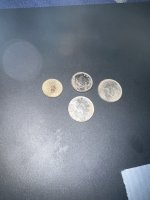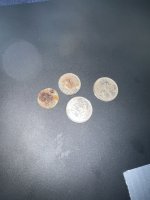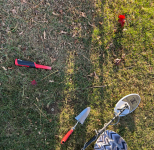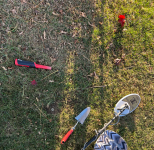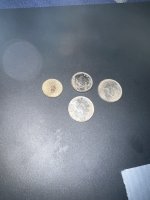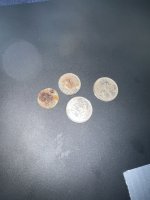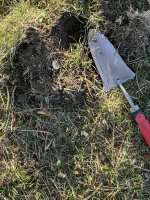metalman2024
Greenie
- Oct 28, 2024
- 10
- 24
- Detector(s) used
- Whites GMT
Fisher F-Pulse pinpointer
- Primary Interest:
- Metal Detecting
Thank you whenever you can read and reply. I appreciate it.
Found those coins 3 to 4 inches deep in turf, three were located within 6 feet from one another and the penny was some 20 feet away, I wonder why the corrosion occurs like that in Canadian coins?
I use a White's GMT and a pulse induction pin-pointer.
One of the neatest things about metal detecting coins, is seeing the date on the coin and realizing that the EARLIEST time that the coin would have been dropped is AFTER the year date on the coin, it might seem obvious but it's still cool to me to somewhat date that spot or field. Any comments are welcome on the logicality or otherwise of the comment.
Want to ask, where are the best metal detecting spots in everyone's opinion?
Found those coins 3 to 4 inches deep in turf, three were located within 6 feet from one another and the penny was some 20 feet away, I wonder why the corrosion occurs like that in Canadian coins?
I use a White's GMT and a pulse induction pin-pointer.
One of the neatest things about metal detecting coins, is seeing the date on the coin and realizing that the EARLIEST time that the coin would have been dropped is AFTER the year date on the coin, it might seem obvious but it's still cool to me to somewhat date that spot or field. Any comments are welcome on the logicality or otherwise of the comment.
Want to ask, where are the best metal detecting spots in everyone's opinion?

Attachments
Upvote
9


